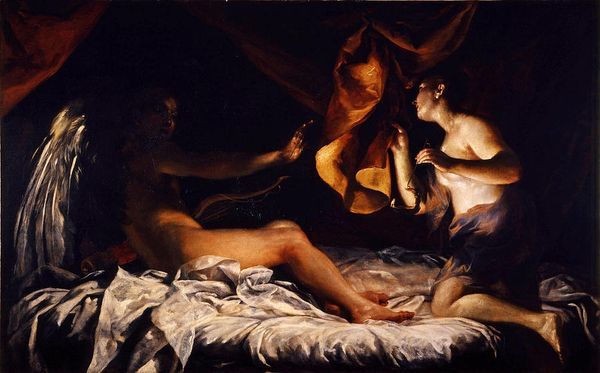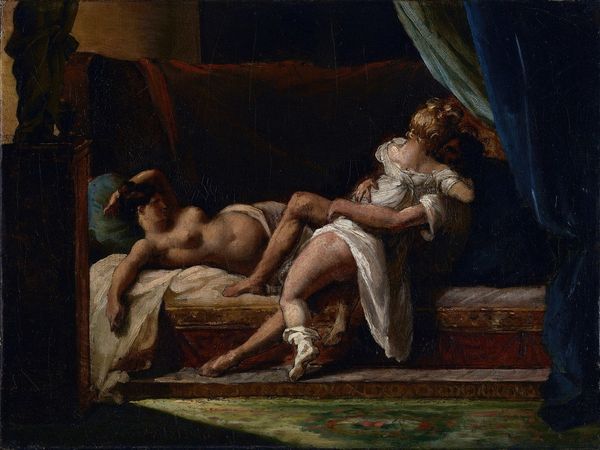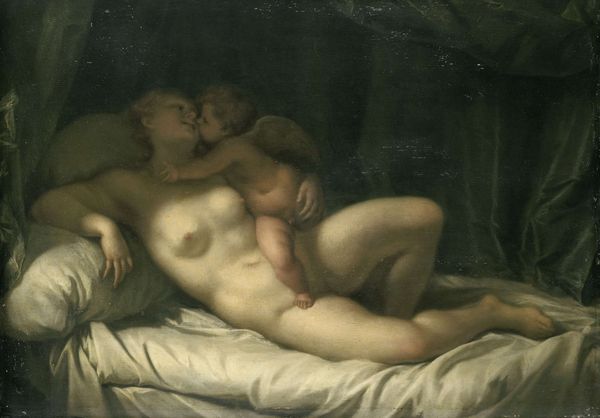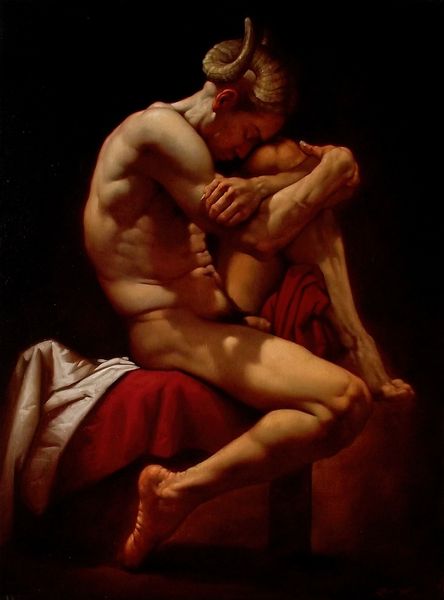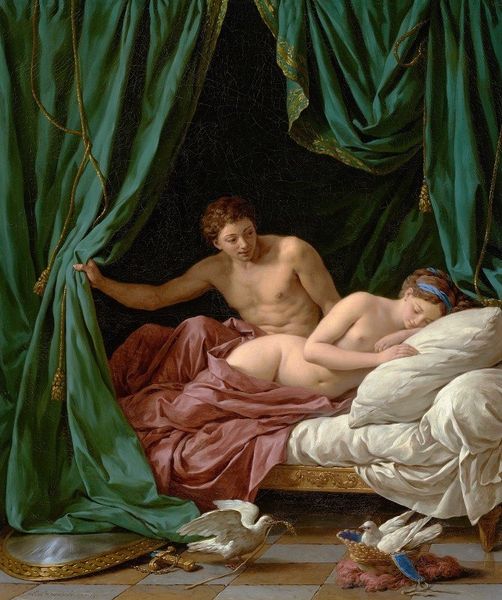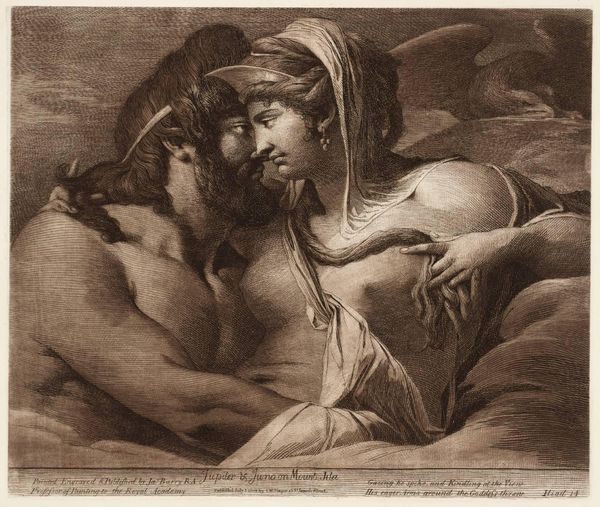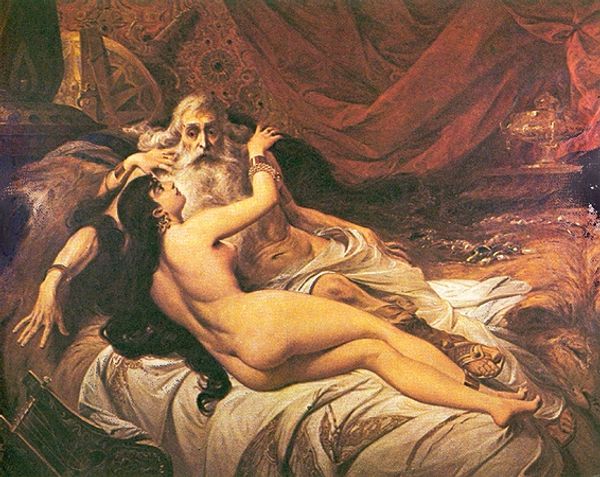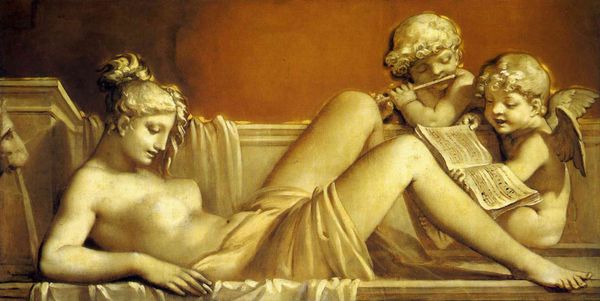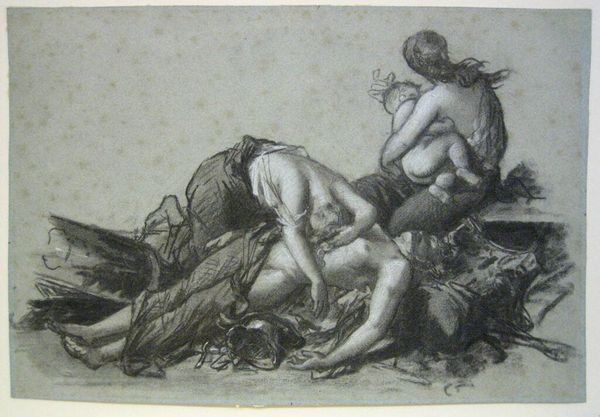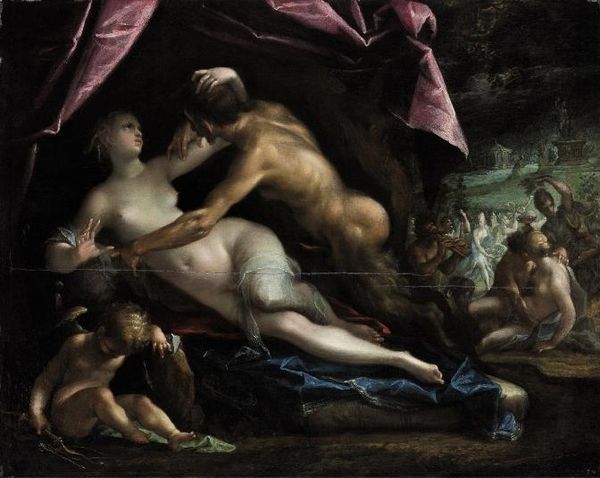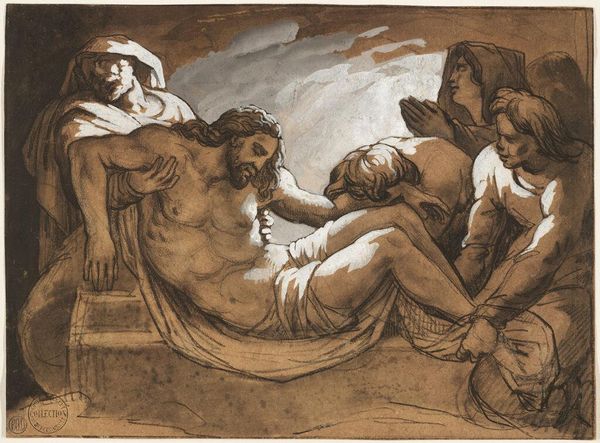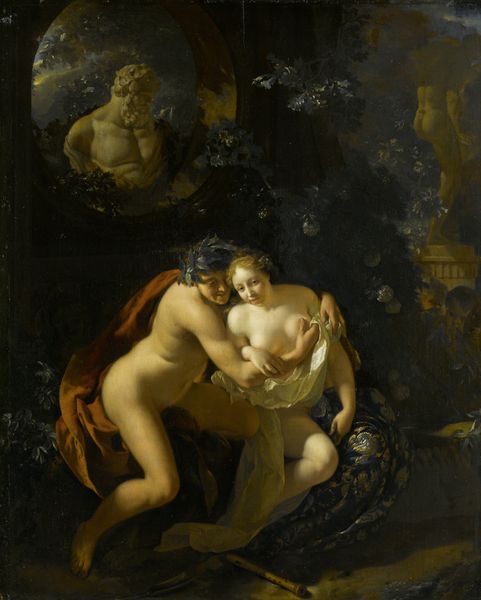
drawing, charcoal
#
drawing
#
charcoal drawing
#
figuration
#
female-nude
#
romanticism
#
line
#
charcoal
#
nude
#
male-nude
#
erotic-art
Copyright: Public domain
Editor: We're looking at Théodore Géricault's "The Kiss," a charcoal drawing from 1816. The erotic tension practically leaps off the page, but there's something tender about it too. It is the art of kissing…but in charcoal…! What catches your eye? Curator: Ah, Géricault! A true Romantic, diving headfirst into passion. For me, it's the dynamism he captures. Not just physical, though that’s certainly there, but emotional. The stark contrast between light and shadow – it’s almost theatrical, don’t you think? Is there also a slightly theatrical quality? Editor: Absolutely. The dramatic lighting emphasizes the bodies. Do you think the starkness elevates the raw emotion of the piece? Curator: Precisely. Consider Romanticism’s focus on emotion and subjectivity. This isn't some idealized love; it’s raw, immediate, and slightly unsettling. And the use of charcoal? Perfect for capturing that mood – think smudged lines, blurred forms...a sense of transience, as if this moment might vanish. Is the eroticism of the piece connected to mortality somehow? Editor: I hadn’t thought of it that way, but it makes sense. The fleeting nature of the kiss emphasizes the urgency, right? I love how his style evokes that contrast. Curator: Exactly. Géricault invites us to reflect on the intense, contradictory nature of human connection: love, desire, and the bittersweet knowledge that everything is ephemeral. Don't we see it reflected on the lines themselves? Editor: Totally! I appreciate how this changed my thinking about Géricault and Romanticism. He wasn’t just interested in grand narratives, he dove deep into human emotions. Curator: Indeed! There's profound beauty and truth to be found in these moments. Art allows us to linger.
Comments
No comments
Be the first to comment and join the conversation on the ultimate creative platform.
